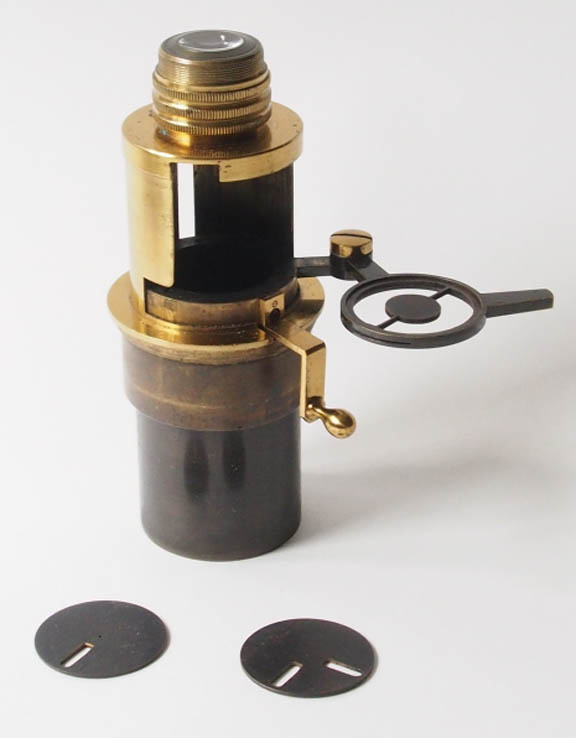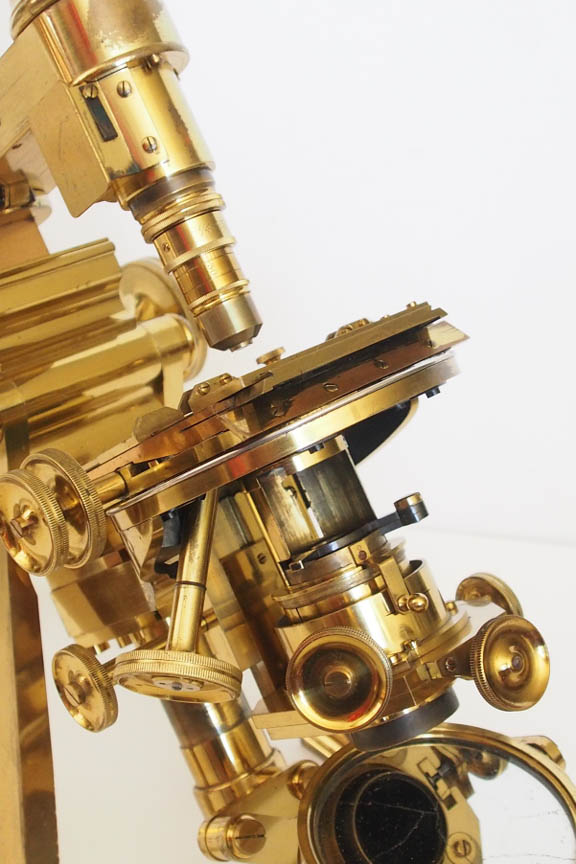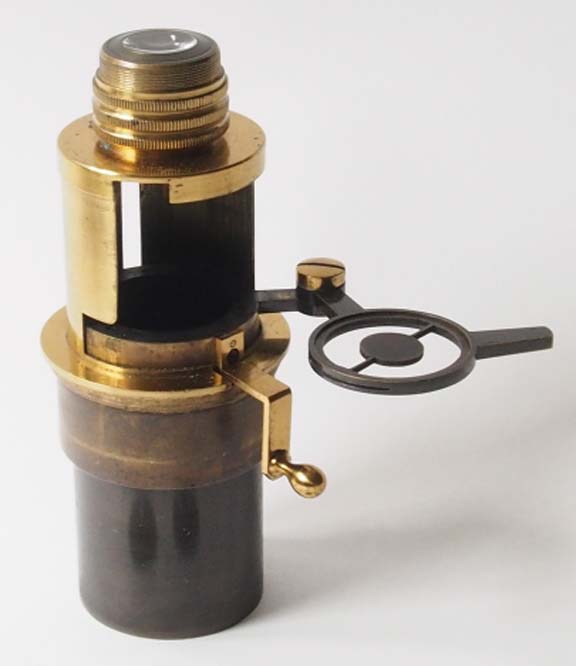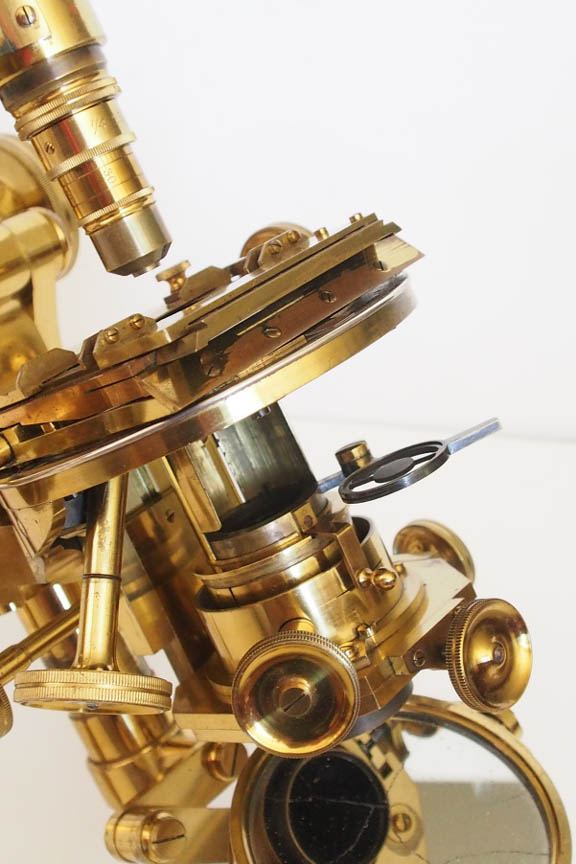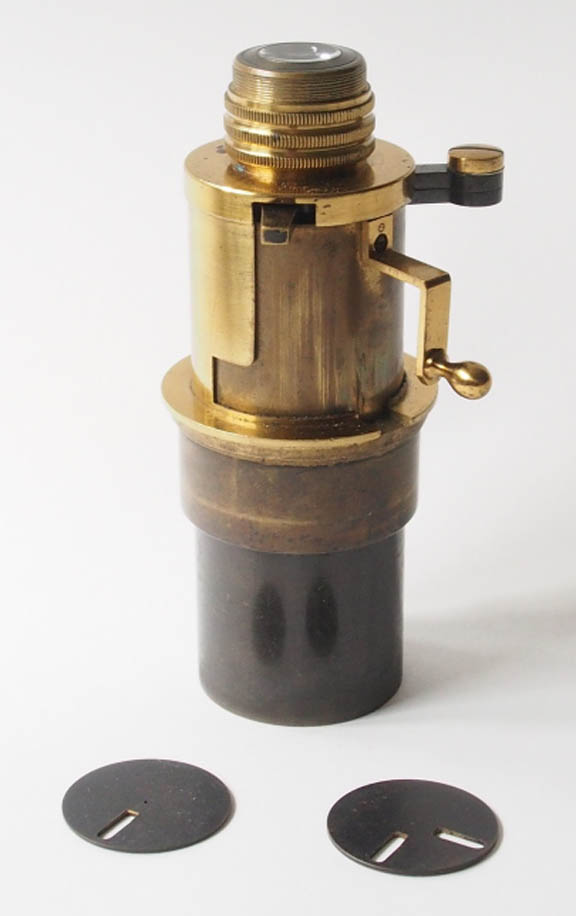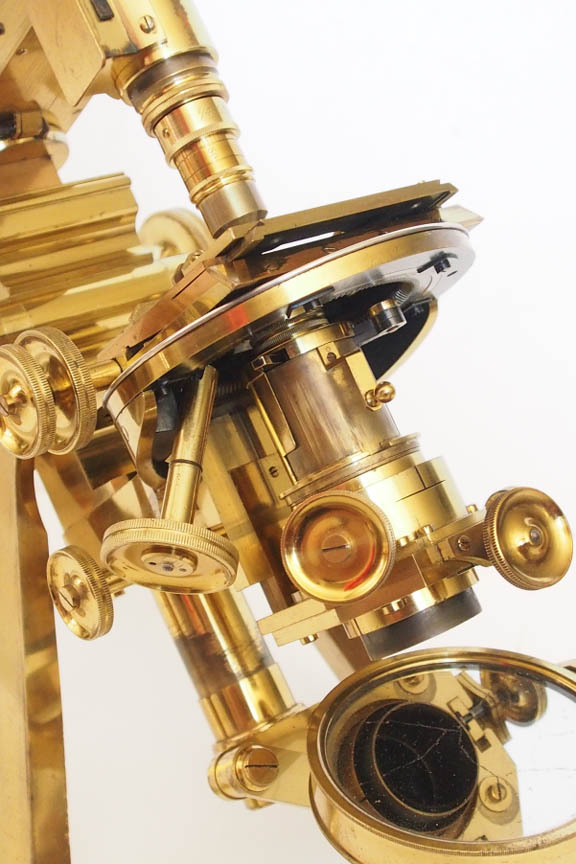ACHROMATIC CONDENSER
MAKER: POWELL & LEALAND
With the appearance of Powell & Lealand’s achromatic oil immersion objectives with the very great apertures of 1.4 and 1.5, and their introduction of apochromatic objective systems, their chromatic oil immersion condenser was subsequently succeeded by an achromatic condenser on the same immersion principle, but out of necessity mechanically different, so it could be employed for transmitted- as well as oblique illumination, and allow for the use of different removable stops. To work most effectively, stops need to be placed close to the lower focal point of the condensers’ optical parts, and inevitably, in high power condensers this is high up in the condenser tube near its lower lens element. As a result, the user was often forced to lower the condenser, thus bringing it out of focus, in order to change the diaphragm stops, when a different mode or angle of illumination was required, a significant disadvantage. To get around this problem, Powell & Lealand (at the instigation of Dallinger, see: Carpenter and Dallinger, 7th ed (1891), page 254)devised a rising and falling sleeve which carried the swing-out holder for the diaphragm stops, which acted as an ‘elevator’, taking the stops up to the required position, so that they could be changed whilst the condenser remained in focus on the slide.
On this design, an achromatic version (N.A. 1.30) was constructed in 1886, and one on the apochromatic principle (N.A. 1.40) in 1891. Apart from being listed in Powell & Lealand’s own catalogues, this condenser was also advertised by W. Watson & Sons in 1902: ‘Powell & Lealand’s Apochromatic oil immersion condenser, 1.4 N.A. mounted in P & L’s special carries, with stops, complete £ 12 0 0”. Unfortunately, in this particular example of this rare device the front lens element is missing, and the range of stops is incomplete.
